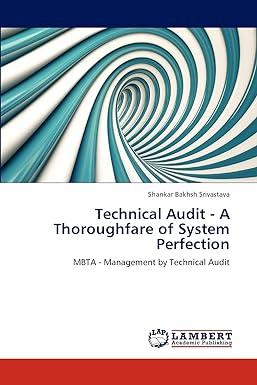QUESTION:
2. JOURNAL ENTRY LIST
- RECORD ENTRIES FROM THE TRANSACTION AND EVENT LIST
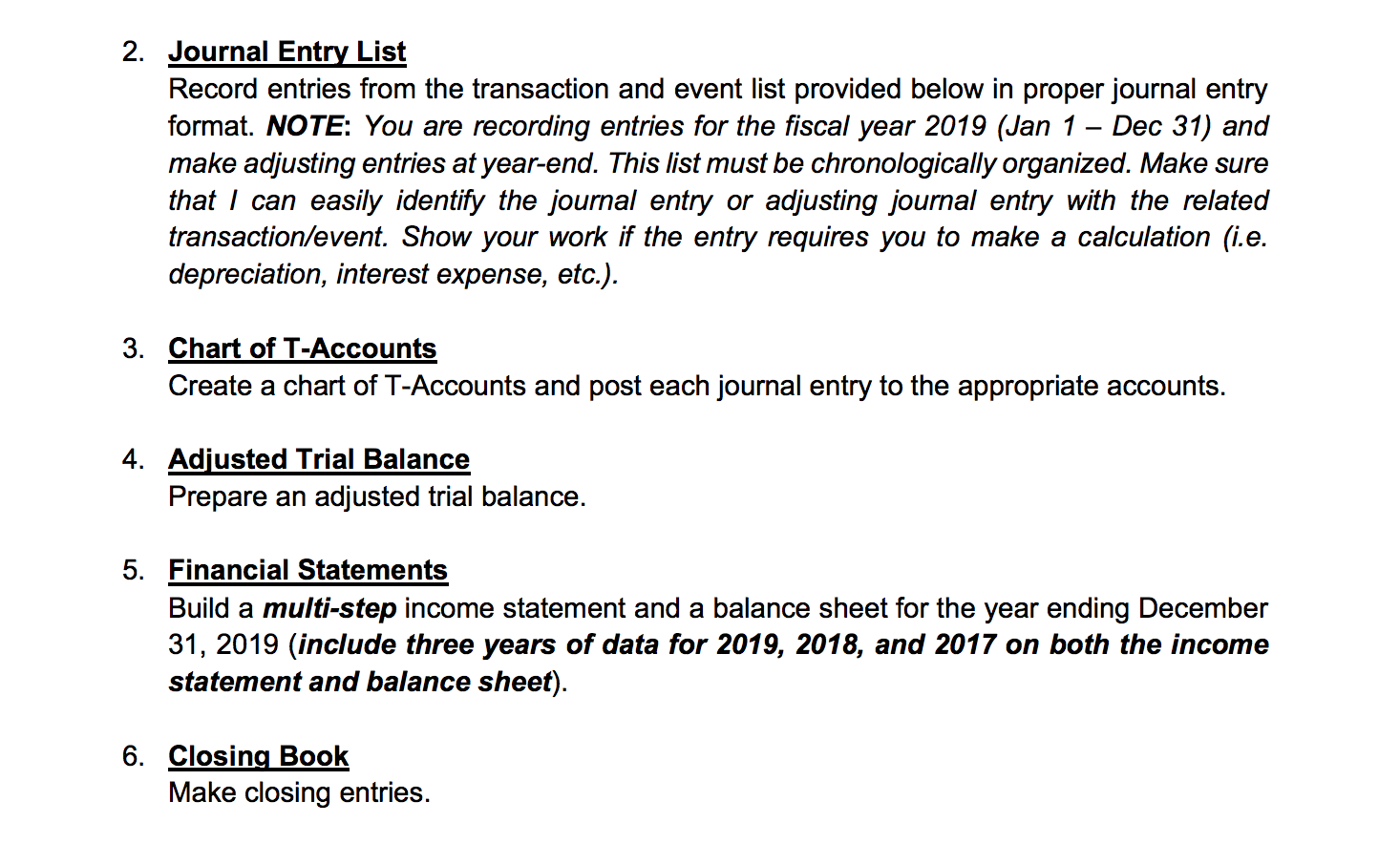

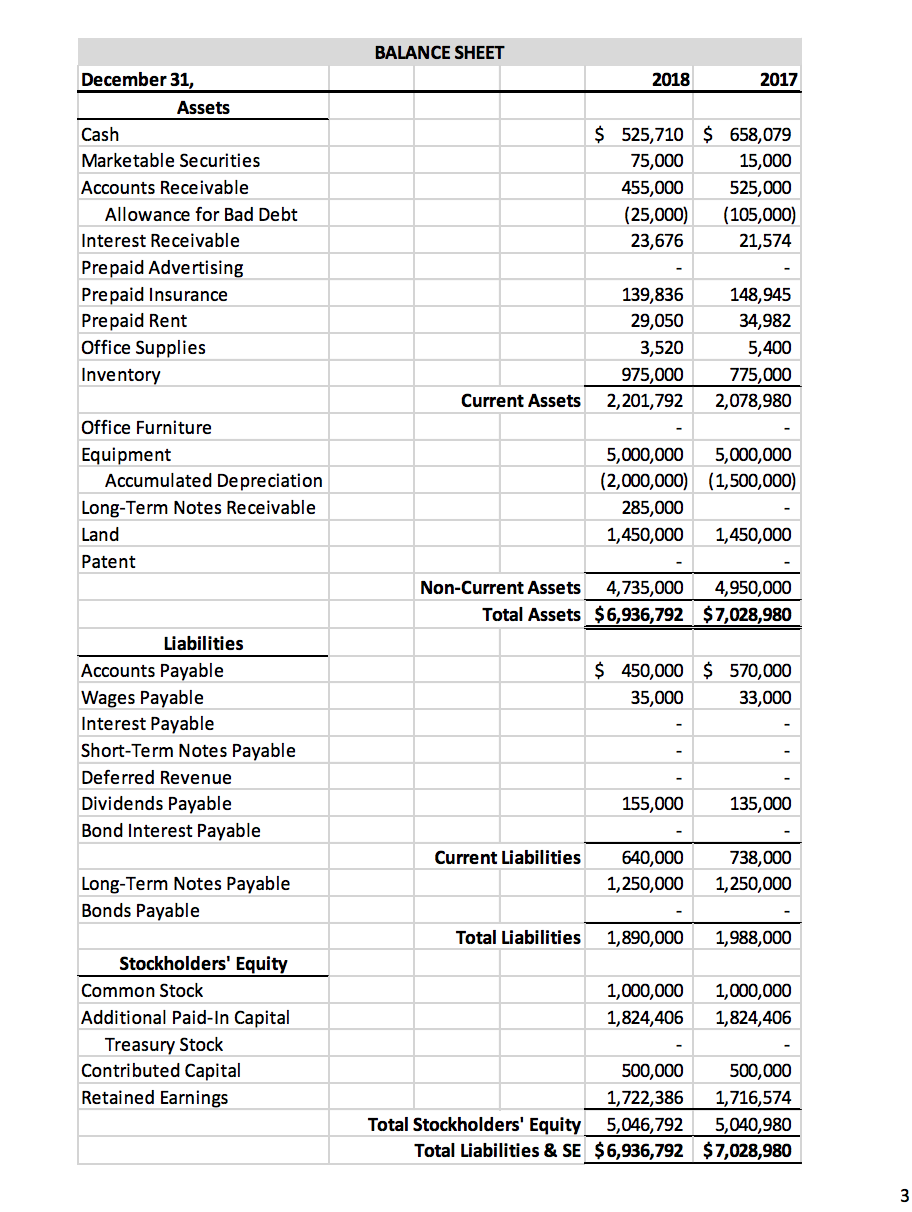
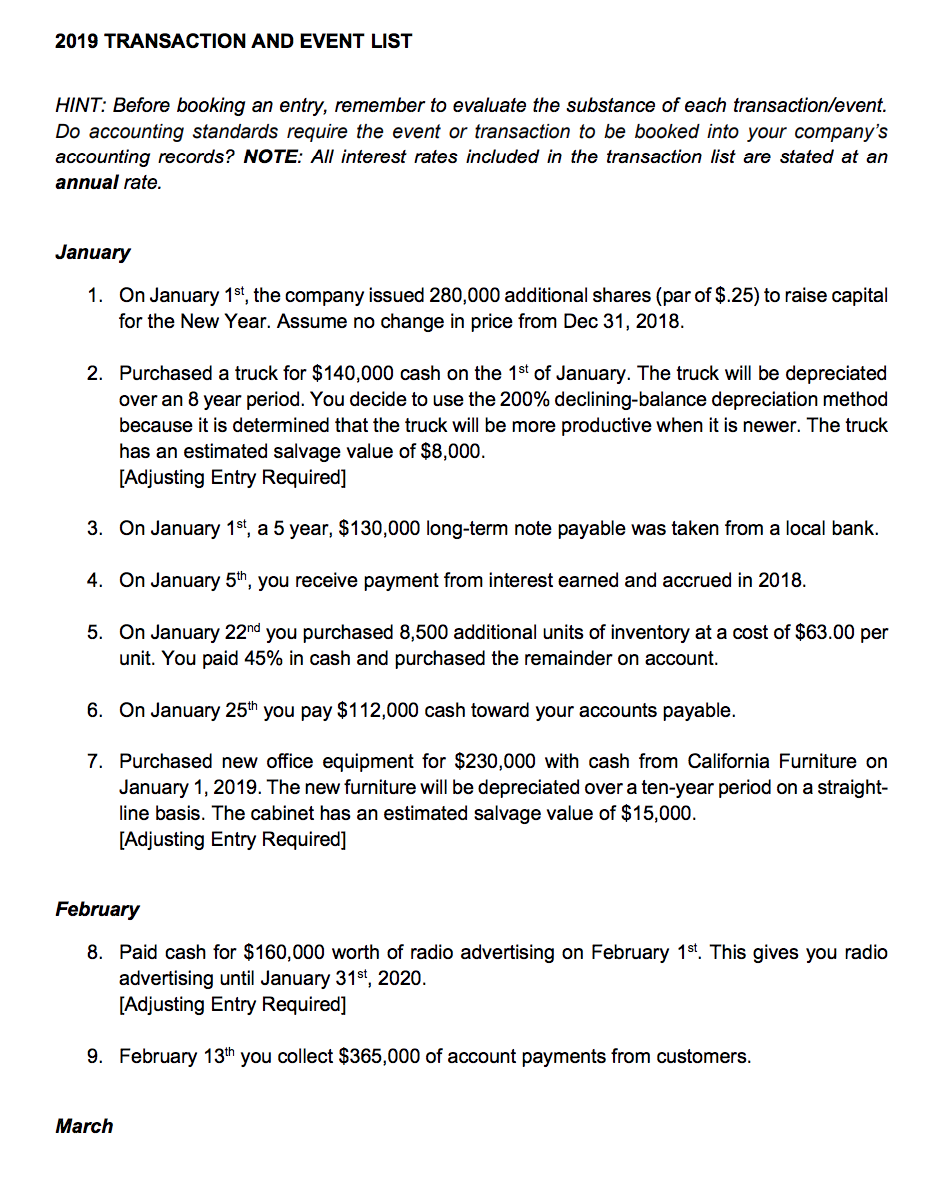
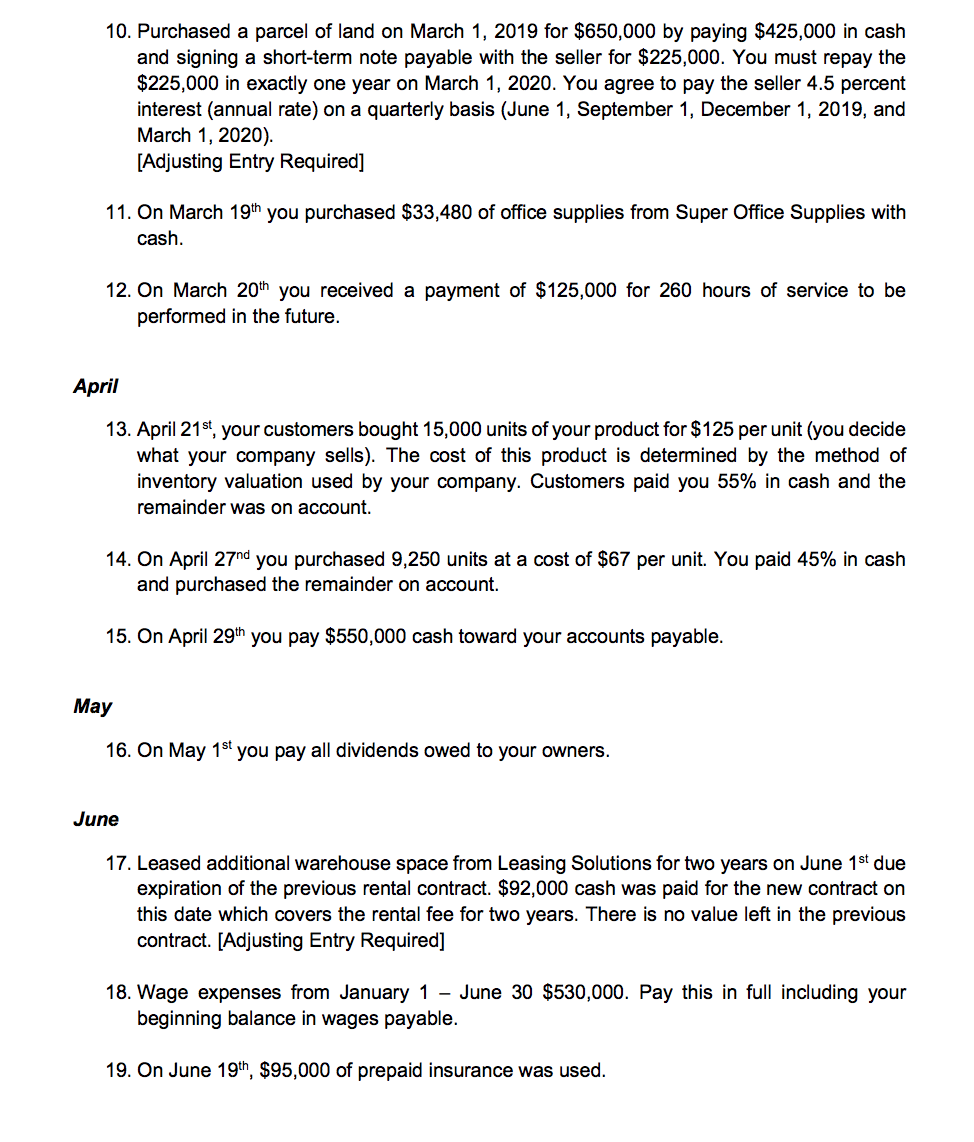

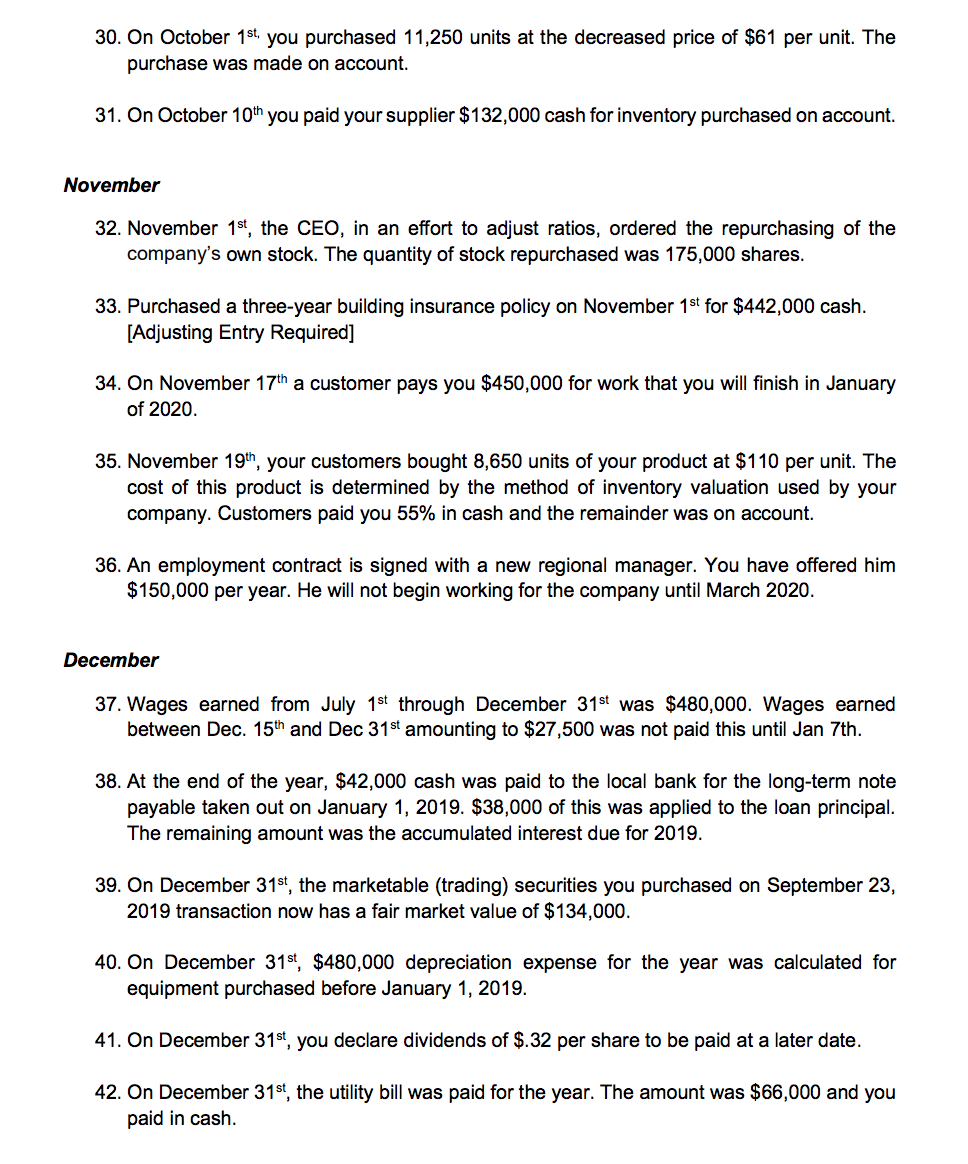
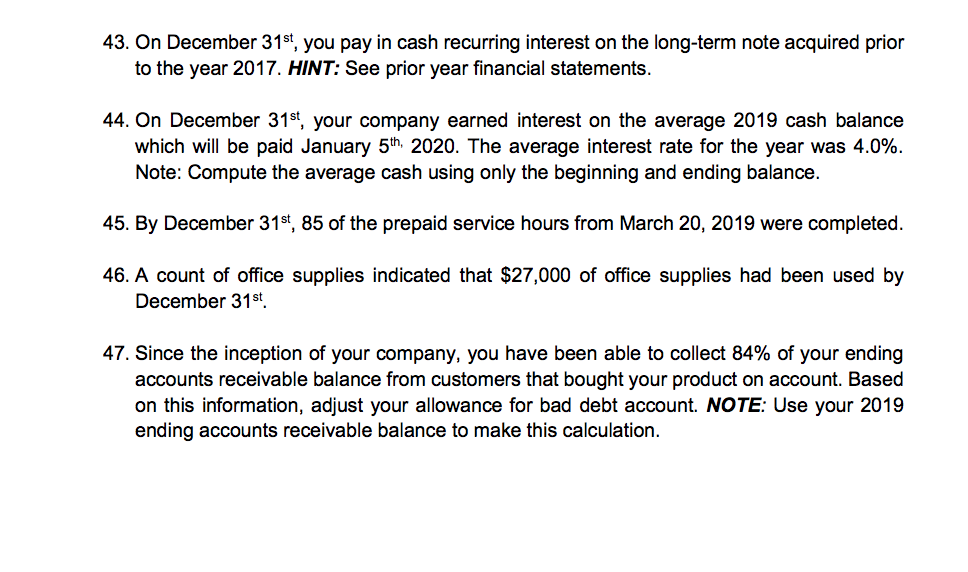
2. Journal Entry List Record entries from the transaction and event list provided below in proper journal entry format. NOTE: You are recording entries for the fiscal year 2019 (Jan 1 - Dec 31) and make adjusting entries at year-end. This list must be chronologically organized. Make sure that I can easily identify the journal entry or adjusting journal entry with the related transaction/event. Show your work if the entry requires you to make a calculation (i.e. depreciation, interest expense, etc.). 3. Chart of T-Accounts Create a chart of T-Accounts and post each journal entry to the appropriate accounts. 4. Adjusted Trial Balance Prepare an adjusted trial balance. 5. Financial Statements Build a multi-step income statement and a balance sheet for the year ending December 31, 2019 (include three years of data for 2019, 2018, and 2017 on both the income statement and balance sheet). 6. Closing Book Make closing entries. COMPANY INFORMATION Your company began operations on January 1, 2016. > From January 1, 2017 - December 31, 2018 your company's stock is traded on the NYSE with 4,000,000 common shares outstanding with a par value of $.25. > At the close of December 31, 2019, your company's stock was trading at $4.25 per share. On November 1st the stock was trading at $3.40. At the end of 2018 and 2017, the value of your stock was $3.80 and $2.90, respectively. > Use the Cost Method for treatment of Treasury Stock. > Use the Allowance Method in accounting for Bad Debts, specifically the Percentage of Accounts Receivable Method. The inventory valuation used by your company is LIFO. The company's inventory on January 1st, 2019 consists of 15,000 units. Prior Income Statement Account Balances 2018 2017 Sales, net $ 2,280,000 $2,500,000 Cost of Goods Sold 850,000 780,000 Wages Expense 565,000 785,000 Utility Expense 37,050 37,500 Insurance Expense 23,905 21,097 Rent Expense 18,009 17,080 Fuel Expense 2,900 1,400 Office Supplies Expense 6,000 5,000 Advertising Expense 23,000 25,000 Bad Debt Expense 60,750 45,000 Depreciation Expense 500,000 500,000 Interest Income 23,676 21,574 Interest Expense 56,250 56,250 Gain on Sale 34,900 Loss on Sale 120,000 BALANCE SHEET 2018 2017 $ 525,710 December 31, Assets Cash Marketable Securities Accounts Receivable Allowance for Bad Debt Interest Receivable Prepaid Advertising Prepaid Insurance Prepaid Rent Office Supplies Inventory 455,000 (25,000) 23,676 $ 658,079 15,000 525,000 (105,000) 21,574 139,836 29,050 3,520 975,000 2,201,792 148,945 34,982 5,400 775,000 2,078,980 Current Assets 5,000,000 (1,500,000) Office Furniture Equipment Accumulated Depreciation Long-Term Notes Receivable Land Patent 5,000,000 (2,000,000) 285,000 1,450,000 1,450,000 Non-Current Assets 4,735,000 Total Assets $6,936,792 4,950,000 $ 7,028,980 $ 450,000 35,000 $ 570,000 33,000 Liabilities Accounts Payable Wages Payable Interest Payable Short-Term Notes Payable Deferred Revenue Dividends Payable Bond Interest Payable 155,000 135,000 Current Liabilities 640,000 1,250,000 738,000 1,250,000 Long-Term Notes Payable Bonds Payable Total Liabilities 1,890,000 1,988,000 1,000,000 1,824,406 1,000,000 1,824,406 Stockholders' Equity Common Stock Additional Paid-In Capital Treasury Stock Contributed Capital Retained Earnings 500,000 1,722,386 Total Stockholders' Equity 5,046,792 Total Liabilities & SE $6,936,792 500,000 1,716,574 5,040,980 $7,028,980 2019 TRANSACTION AND EVENT LIST HINT: Before booking an entry, remember to evaluate the substance of each transaction/event. Do accounting standards require the event or transaction to be booked into your company's accounting records? NOTE: All interest rates included in the transaction list are stated at an annual rate. January 1. On January 1st, the company issued 280,000 additional shares (par of $.25) to raise capital for the New Year. Assume no change in price from Dec 31, 2018. 2. Purchased a truck for $140,000 cash on the 1st of January. The truck will be depreciated over an 8 year period. You decide to use the 200% declining-balance depreciation method because it is determined that the truck will be more productive when it is newer. The truck has an estimated salvage value of $8,000. [Adjusting Entry Required] 3. On January 1st, a 5 year, $130,000 long-term note payable was taken from a local bank. 4. On January 5th, you receive payment from interest earned and accrued in 2018. 5. On January 22nd you purchased 8,500 additional units of inventory at a cost of $63.00 per unit. You paid 45% in cash and purchased the remainder on account. 6. On January 25th you pay $112,000 cash toward your accounts payable. 7. Purchased new office equipment for $230,000 with cash from California Furniture on January 1, 2019. The new furniture will be depreciated over a ten-year period on a straight- line basis. The cabinet has an estimated salvage value of $15,000. [Adjusting Entry Required] February 8. Paid cash for $160,000 worth of radio advertising on February 1st. This gives you radio advertising until January 31st, 2020. [Adjusting Entry Required] 9. February 13th you collect $365,000 of account payments from customers. March 10. Purchased a parcel of land on March 1, 2019 for $650,000 by paying $425,000 in cash and signing a short-term note payable with the seller for $225,000. You must repay the $225,000 in exactly one year on March 1, 2020. You agree to pay the seller 4.5 percent interest (annual rate) on a quarterly basis (June 1, September 1, December 1, 2019, and March 1, 2020). [Adjusting Entry Required] 11. On March 19th you purchased $33,480 of office supplies from Super Office Supplies with cash. 12. On March 20th you received a payment of $125,000 for 260 hours of service to be performed in the future. April 13. April 21st, your customers bought 15,000 units of your product for $125 per unit (you decide what your company sells). The cost of this product is determined by the method of inventory valuation used by your company. Customers paid you 55% in cash and the remainder was on account. 14. On April 27nd you purchased 9,250 units at a cost of $67 per unit. You paid 45% in cash and purchased the remainder on account. 15. On April 29th you pay $550,000 cash toward your accounts payable. May 16. On May 1st you pay all dividends owed to your owners. June 17. Leased additional warehouse space from Leasing Solutions for two years on June 1st due expiration of the previous rental contract. $92,000 cash was paid for the new contract on this date which covers the rental fee for two years. There is no value left in the previous contract. [Adjusting Entry Required] 18. Wage expenses from January 1 June 30 $530,000. Pay this in full including your beginning balance in wages payable. 19. On June 19th, $95,000 of prepaid insurance was used. 20. On June 26th a customer that previously bought your product on account has filed for bankruptcy. He owed you $62,500. You expect to collect $0. July 21. Your company issued 1,000, 3.8% bonds (face value of each bond is $1,000) at 101.8250 on July 1st, 2019. The bonds are due on July 1, 2024, with interest payable each January 1 and July 1. The market rate at the time of the bond issuance was 3.4%. Use the effective- interest method to calculate both the interest expense and the amortization of the bond discount when each interest payment is made. [Adjusting Entry Required] August 22. On August 6th, a piece of land that was originally purchased for $1,250,000 was sold for $1,550,000 cash. 23. August 15th, your customers bought 9,000 units of your product at $116.00 per unit. The cost of this product is determined by the method of inventory valuation used by your company. Customers paid you 50% in cash and the remainder was on account. 24. Received on August 25th a $156,000 cash payment from a customer paying on their account 25. Purchased a Patent (Intangible Asset) for $165,000 on August 1st. The patent will be amortized over a 10 year period on a straight-line basis. [Adjusting Entry Required] September 26. $122,000 cash was paid for an investment in Company X's marketable securities on September 3rd 27. On September 12th, a piece of equipment was sold for $650,000 cash. The equipment was originally purchased for $1,100,000. At the time of the sale, it had been depreciated by $235,000. 28. Purchased and used $3,500 worth of fuel for the delivery truck on September 18th. October 29. Your top sales officer met with a new customer to discuss a potential future contract. She informs you that the customer is considering signing the $200,000 deal, which would become effective February 2020. 30. On October 1st, you purchased 11,250 units at the decreased price of $61 per unit. The purchase was made on account. 31. On October 10th you paid your supplier $132,000 cash for inventory purchased on account. November 32. November 1st, the CEO, in an effort to adjust ratios, ordered the repurchasing of the company's own stock. The quantity of stock repurchased was 175,000 shares. 33. Purchased a three-year building insurance policy on November 1st for $442,000 cash. [Adjusting Entry Required] 34. On November 17th a customer pays you $450,000 for work that you will finish in January of 2020. 35. November 19th, your customers bought 8,650 units of your product at $110 per unit. The cost of this product is determined by the method of inventory valuation used by your company. Customers paid you 55% in cash and the remainder was on account. 36. An employment contract is signed with a new regional manager. You have offered him $150,000 per year. He will not begin working for the company until March 2020. December 37. Wages earned from July 1st through December 31st was $480,000. Wages earned between Dec. 15th and Dec 31st amounting to $27,500 was not paid this until Jan 7th. 38. At the end of the year, $42,000 cash was paid to the local bank for the long-term note payable taken out on January 1, 2019. $38,000 of this was applied to the loan principal. The remaining amount was the accumulated interest due for 2019. 39. On December 31st, the marketable (trading) securities you purchased on September 23, 2019 transaction now has a fair market value of $134,000. 40. On December 31st, $480,000 depreciation expense for the year was calculated for equipment purchased before January 1, 2019. 41. On December 31st, you declare dividends of $.32 per share to be paid at a later date. 42. On December 31st, the utility bill was paid for the year. The amount was $66,000 and you paid in cash. 43. On December 31st, you pay in cash recurring interest on the long-term note acquired prior to the year 2017. HINT: See prior year financial statements. 44. On December 31st, your company earned interest on the average 2019 cash balance which will be paid January 5th, 2020. The average interest rate for the year was 4.0%. Note: Compute the average cash using only the beginning and ending balance. 45. By December 31st, 85 of the prepaid service hours from March 20, 2019 were completed. 46. A count of office supplies indicated that $27,000 of office supplies had been used by December 31st 47. Since the inception of your company, you have been able to collect 84% of your ending accounts receivable balance from customers that bought your product on account. Based on this information, adjust your allowance for bad debt account. NOTE: Use your 2019 ending accounts receivable balance to make this calculation. 2. Journal Entry List Record entries from the transaction and event list provided below in proper journal entry format. NOTE: You are recording entries for the fiscal year 2019 (Jan 1 - Dec 31) and make adjusting entries at year-end. This list must be chronologically organized. Make sure that I can easily identify the journal entry or adjusting journal entry with the related transaction/event. Show your work if the entry requires you to make a calculation (i.e. depreciation, interest expense, etc.). 3. Chart of T-Accounts Create a chart of T-Accounts and post each journal entry to the appropriate accounts. 4. Adjusted Trial Balance Prepare an adjusted trial balance. 5. Financial Statements Build a multi-step income statement and a balance sheet for the year ending December 31, 2019 (include three years of data for 2019, 2018, and 2017 on both the income statement and balance sheet). 6. Closing Book Make closing entries. COMPANY INFORMATION Your company began operations on January 1, 2016. > From January 1, 2017 - December 31, 2018 your company's stock is traded on the NYSE with 4,000,000 common shares outstanding with a par value of $.25. > At the close of December 31, 2019, your company's stock was trading at $4.25 per share. On November 1st the stock was trading at $3.40. At the end of 2018 and 2017, the value of your stock was $3.80 and $2.90, respectively. > Use the Cost Method for treatment of Treasury Stock. > Use the Allowance Method in accounting for Bad Debts, specifically the Percentage of Accounts Receivable Method. The inventory valuation used by your company is LIFO. The company's inventory on January 1st, 2019 consists of 15,000 units. Prior Income Statement Account Balances 2018 2017 Sales, net $ 2,280,000 $2,500,000 Cost of Goods Sold 850,000 780,000 Wages Expense 565,000 785,000 Utility Expense 37,050 37,500 Insurance Expense 23,905 21,097 Rent Expense 18,009 17,080 Fuel Expense 2,900 1,400 Office Supplies Expense 6,000 5,000 Advertising Expense 23,000 25,000 Bad Debt Expense 60,750 45,000 Depreciation Expense 500,000 500,000 Interest Income 23,676 21,574 Interest Expense 56,250 56,250 Gain on Sale 34,900 Loss on Sale 120,000 BALANCE SHEET 2018 2017 $ 525,710 December 31, Assets Cash Marketable Securities Accounts Receivable Allowance for Bad Debt Interest Receivable Prepaid Advertising Prepaid Insurance Prepaid Rent Office Supplies Inventory 455,000 (25,000) 23,676 $ 658,079 15,000 525,000 (105,000) 21,574 139,836 29,050 3,520 975,000 2,201,792 148,945 34,982 5,400 775,000 2,078,980 Current Assets 5,000,000 (1,500,000) Office Furniture Equipment Accumulated Depreciation Long-Term Notes Receivable Land Patent 5,000,000 (2,000,000) 285,000 1,450,000 1,450,000 Non-Current Assets 4,735,000 Total Assets $6,936,792 4,950,000 $ 7,028,980 $ 450,000 35,000 $ 570,000 33,000 Liabilities Accounts Payable Wages Payable Interest Payable Short-Term Notes Payable Deferred Revenue Dividends Payable Bond Interest Payable 155,000 135,000 Current Liabilities 640,000 1,250,000 738,000 1,250,000 Long-Term Notes Payable Bonds Payable Total Liabilities 1,890,000 1,988,000 1,000,000 1,824,406 1,000,000 1,824,406 Stockholders' Equity Common Stock Additional Paid-In Capital Treasury Stock Contributed Capital Retained Earnings 500,000 1,722,386 Total Stockholders' Equity 5,046,792 Total Liabilities & SE $6,936,792 500,000 1,716,574 5,040,980 $7,028,980 2019 TRANSACTION AND EVENT LIST HINT: Before booking an entry, remember to evaluate the substance of each transaction/event. Do accounting standards require the event or transaction to be booked into your company's accounting records? NOTE: All interest rates included in the transaction list are stated at an annual rate. January 1. On January 1st, the company issued 280,000 additional shares (par of $.25) to raise capital for the New Year. Assume no change in price from Dec 31, 2018. 2. Purchased a truck for $140,000 cash on the 1st of January. The truck will be depreciated over an 8 year period. You decide to use the 200% declining-balance depreciation method because it is determined that the truck will be more productive when it is newer. The truck has an estimated salvage value of $8,000. [Adjusting Entry Required] 3. On January 1st, a 5 year, $130,000 long-term note payable was taken from a local bank. 4. On January 5th, you receive payment from interest earned and accrued in 2018. 5. On January 22nd you purchased 8,500 additional units of inventory at a cost of $63.00 per unit. You paid 45% in cash and purchased the remainder on account. 6. On January 25th you pay $112,000 cash toward your accounts payable. 7. Purchased new office equipment for $230,000 with cash from California Furniture on January 1, 2019. The new furniture will be depreciated over a ten-year period on a straight- line basis. The cabinet has an estimated salvage value of $15,000. [Adjusting Entry Required] February 8. Paid cash for $160,000 worth of radio advertising on February 1st. This gives you radio advertising until January 31st, 2020. [Adjusting Entry Required] 9. February 13th you collect $365,000 of account payments from customers. March 10. Purchased a parcel of land on March 1, 2019 for $650,000 by paying $425,000 in cash and signing a short-term note payable with the seller for $225,000. You must repay the $225,000 in exactly one year on March 1, 2020. You agree to pay the seller 4.5 percent interest (annual rate) on a quarterly basis (June 1, September 1, December 1, 2019, and March 1, 2020). [Adjusting Entry Required] 11. On March 19th you purchased $33,480 of office supplies from Super Office Supplies with cash. 12. On March 20th you received a payment of $125,000 for 260 hours of service to be performed in the future. April 13. April 21st, your customers bought 15,000 units of your product for $125 per unit (you decide what your company sells). The cost of this product is determined by the method of inventory valuation used by your company. Customers paid you 55% in cash and the remainder was on account. 14. On April 27nd you purchased 9,250 units at a cost of $67 per unit. You paid 45% in cash and purchased the remainder on account. 15. On April 29th you pay $550,000 cash toward your accounts payable. May 16. On May 1st you pay all dividends owed to your owners. June 17. Leased additional warehouse space from Leasing Solutions for two years on June 1st due expiration of the previous rental contract. $92,000 cash was paid for the new contract on this date which covers the rental fee for two years. There is no value left in the previous contract. [Adjusting Entry Required] 18. Wage expenses from January 1 June 30 $530,000. Pay this in full including your beginning balance in wages payable. 19. On June 19th, $95,000 of prepaid insurance was used. 20. On June 26th a customer that previously bought your product on account has filed for bankruptcy. He owed you $62,500. You expect to collect $0. July 21. Your company issued 1,000, 3.8% bonds (face value of each bond is $1,000) at 101.8250 on July 1st, 2019. The bonds are due on July 1, 2024, with interest payable each January 1 and July 1. The market rate at the time of the bond issuance was 3.4%. Use the effective- interest method to calculate both the interest expense and the amortization of the bond discount when each interest payment is made. [Adjusting Entry Required] August 22. On August 6th, a piece of land that was originally purchased for $1,250,000 was sold for $1,550,000 cash. 23. August 15th, your customers bought 9,000 units of your product at $116.00 per unit. The cost of this product is determined by the method of inventory valuation used by your company. Customers paid you 50% in cash and the remainder was on account. 24. Received on August 25th a $156,000 cash payment from a customer paying on their account 25. Purchased a Patent (Intangible Asset) for $165,000 on August 1st. The patent will be amortized over a 10 year period on a straight-line basis. [Adjusting Entry Required] September 26. $122,000 cash was paid for an investment in Company X's marketable securities on September 3rd 27. On September 12th, a piece of equipment was sold for $650,000 cash. The equipment was originally purchased for $1,100,000. At the time of the sale, it had been depreciated by $235,000. 28. Purchased and used $3,500 worth of fuel for the delivery truck on September 18th. October 29. Your top sales officer met with a new customer to discuss a potential future contract. She informs you that the customer is considering signing the $200,000 deal, which would become effective February 2020. 30. On October 1st, you purchased 11,250 units at the decreased price of $61 per unit. The purchase was made on account. 31. On October 10th you paid your supplier $132,000 cash for inventory purchased on account. November 32. November 1st, the CEO, in an effort to adjust ratios, ordered the repurchasing of the company's own stock. The quantity of stock repurchased was 175,000 shares. 33. Purchased a three-year building insurance policy on November 1st for $442,000 cash. [Adjusting Entry Required] 34. On November 17th a customer pays you $450,000 for work that you will finish in January of 2020. 35. November 19th, your customers bought 8,650 units of your product at $110 per unit. The cost of this product is determined by the method of inventory valuation used by your company. Customers paid you 55% in cash and the remainder was on account. 36. An employment contract is signed with a new regional manager. You have offered him $150,000 per year. He will not begin working for the company until March 2020. December 37. Wages earned from July 1st through December 31st was $480,000. Wages earned between Dec. 15th and Dec 31st amounting to $27,500 was not paid this until Jan 7th. 38. At the end of the year, $42,000 cash was paid to the local bank for the long-term note payable taken out on January 1, 2019. $38,000 of this was applied to the loan principal. The remaining amount was the accumulated interest due for 2019. 39. On December 31st, the marketable (trading) securities you purchased on September 23, 2019 transaction now has a fair market value of $134,000. 40. On December 31st, $480,000 depreciation expense for the year was calculated for equipment purchased before January 1, 2019. 41. On December 31st, you declare dividends of $.32 per share to be paid at a later date. 42. On December 31st, the utility bill was paid for the year. The amount was $66,000 and you paid in cash. 43. On December 31st, you pay in cash recurring interest on the long-term note acquired prior to the year 2017. HINT: See prior year financial statements. 44. On December 31st, your company earned interest on the average 2019 cash balance which will be paid January 5th, 2020. The average interest rate for the year was 4.0%. Note: Compute the average cash using only the beginning and ending balance. 45. By December 31st, 85 of the prepaid service hours from March 20, 2019 were completed. 46. A count of office supplies indicated that $27,000 of office supplies had been used by December 31st 47. Since the inception of your company, you have been able to collect 84% of your ending accounts receivable balance from customers that bought your product on account. Based on this information, adjust your allowance for bad debt account. NOTE: Use your 2019 ending accounts receivable balance to make this calculation














